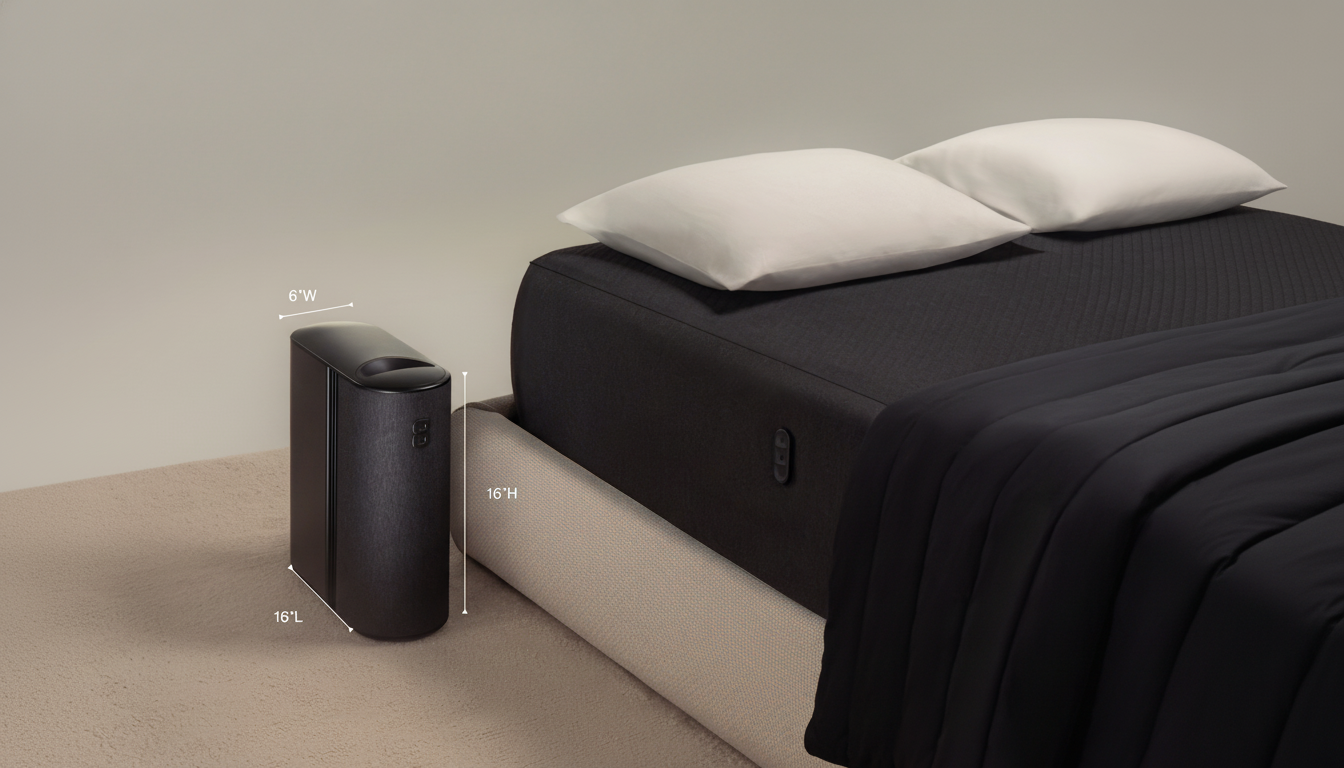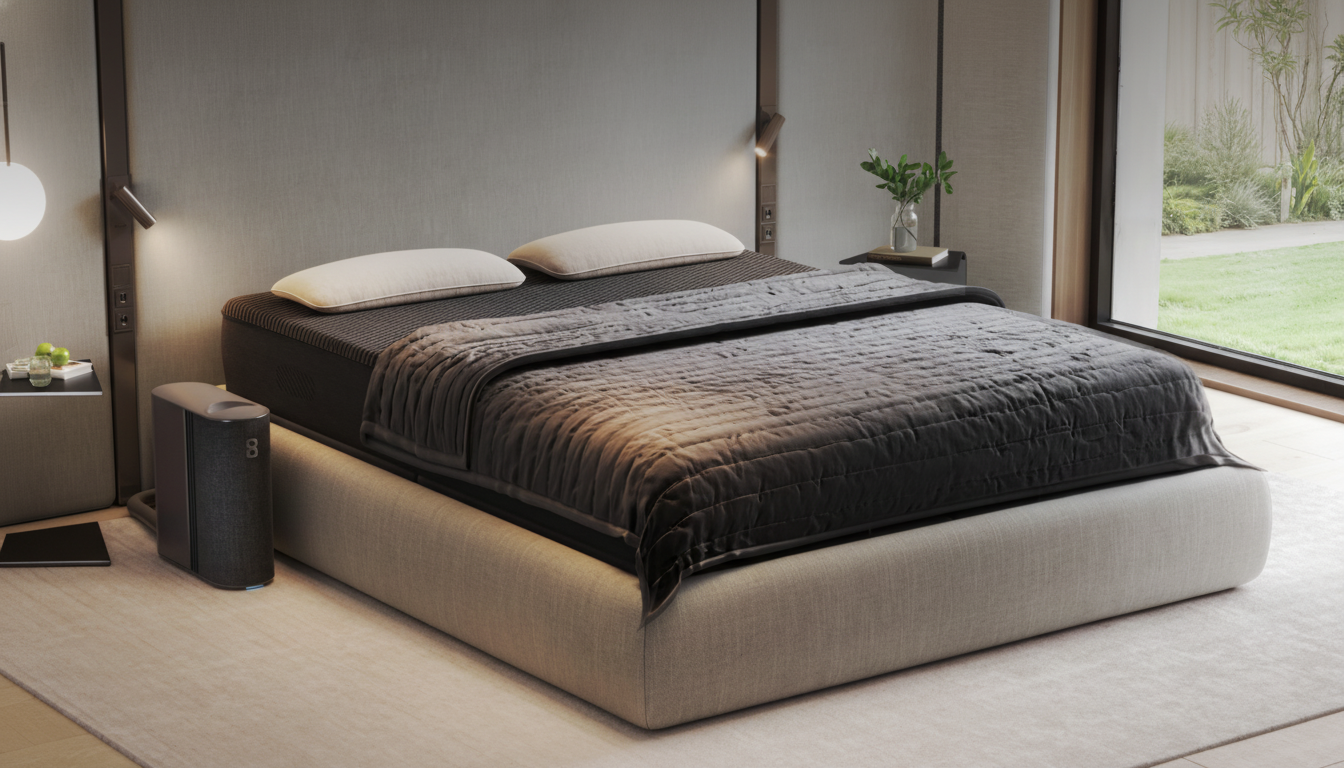A major Amazon Web Services outage reverberated throughout the smart home this week, leaving some smart beds stranded in awkward — and in one instance uncomfortably warm — positions. Eight Sleep system owners say mattresses are also stuck in an incline and heating covers can’t get cold or respond to app commands as cloud services stutter. The episode exposed a known risk of connected living that is easy to overlook: when cloud systems let us down, physical comfort and safety can fail as well.
What happened to smart beds during the AWS outage
Eight Sleep’s Pod platform includes a water-based thermal layer that regulates temperature and supports bed position and alarms through app-based profiles. On Wednesday, the day of the outage, users reported that preheat cycles were running as scheduled while new commands would simply not stick, leaving surfaces a few degrees warmer than they intended. One customer said their bed stayed about 9 degrees above the target, while others said they woke up to a mattress pushing 80 degrees Fahrenheit with no way of dialing it back until connectivity was restored. Several also reported adjustable frames being frozen upright or in a tilt mode.

Eight Sleep’s chief executive addressed the breakdown on X, apologized, and said that, in practice, the experience had failed to live up to expectations. The company said it is building a fail-safe to keep core functions operating even when the cloud is down, and services have been restored after engineers intervened. The company’s hardware range is also expensive, starting with a Pod cover that fits over existing mattresses and rising to the top-end Pod 5 Ultra: customers should reasonably expect premium dependability even when networks flex.
Why a cloud snafu can heat or tilt a bed
Many smart-home devices serve as “thin clients” that delegate authentication, scheduling, and state changes to cloud endpoints. In the case of a control-plane or DNS failure, as Amazon would later describe this incident, devices may still execute their last-known program but do not process new inputs that rely on APIs they cannot reach. In a bed, that can result in a preheat routine continuing while the user’s “cool down now” command never arrives, and the adjustable frame can’t get the “go flat” signal from the offline service.
The broader context matters. AWS has around a third of the world’s infrastructure cloud market share by revenue, according to Synergy Research Group, which means even short disruptions cause old media logos in consumer apps and connected devices all over the U.S. to flutter away. By some estimates, there are over 16 billion active IoT endpoints worldwide today, and the vast majority of them were not built with offline resiliency in mind. When we’re dealing with comfort devices that have a foot in the realm of safety issues — heat, motion, motors — fail-safe is just as important as smart.

What vendors should do differently next
For connected products, experts have long advised graceful degradation: if the cloud is not available, a device should fall back to a safe and predictable state where local control can be reasserted. For heated bedding, that might be a well-understood maximum temperature limit reached conservatively, preheat cycles with hard limits (or a way to taper off safely toward the end of heating), and it may also take the form of its own sensor-local loop to provide safety even if servers crash. And for adjustable frames, hitting that button would hopefully override the system — through a mechanical or firmware-level override on-frame — and return your bed to flat at the push of a button (with or without internet access).
There are, technically, a few practical guardrails. Devices can cache on-device profiles, directly control Bluetooth Low Energy, and “go offline” after a number of missed heartbeats from the cloud by prioritizing physical controls and critical safety logic. Another approach for vendors would be to share responsibility: offload analytics and noncritical functions to the cloud but let standard household appliance mechanisms (capped duty cycles, sensor redundancy as per IEC/UL-controlled heating systems) handle core temperature and motor safety.
What consumers can do now to prepare for cloud outages
Until makers start offering increased resilience, a few habits can make a difference. Maintain conservative default schedules in case of a failed command resulting in a too-hot bed. Perform a short test of what your device will do offline by temporarily disabling your home internet connection and checking if the local buttons still change temperature and position. If your unit can be controlled from your phone with Bluetooth or local Wi‑Fi, pair and try it. And if controls are nonfunctional during an outage, a power cycle can usually return systems to the safe baseline of an ambient-temperature, planar state.
For their part, cloud operators often share post-incident analysis reporting on “root causes” and mitigation. Amazon has stated that a DNS resolution problem affecting API traffic is responsible for this outage and that a post-mortem will be provided. Equally important will be transparency from both platform and device maker, in addition to concrete design changes like offline control or safety-first defaults — the difference between whether this week’s hot, tilted beds, ensconced in excuse-making, become a cautionary footnote or a turning point for smarter, safer sleep tech.

